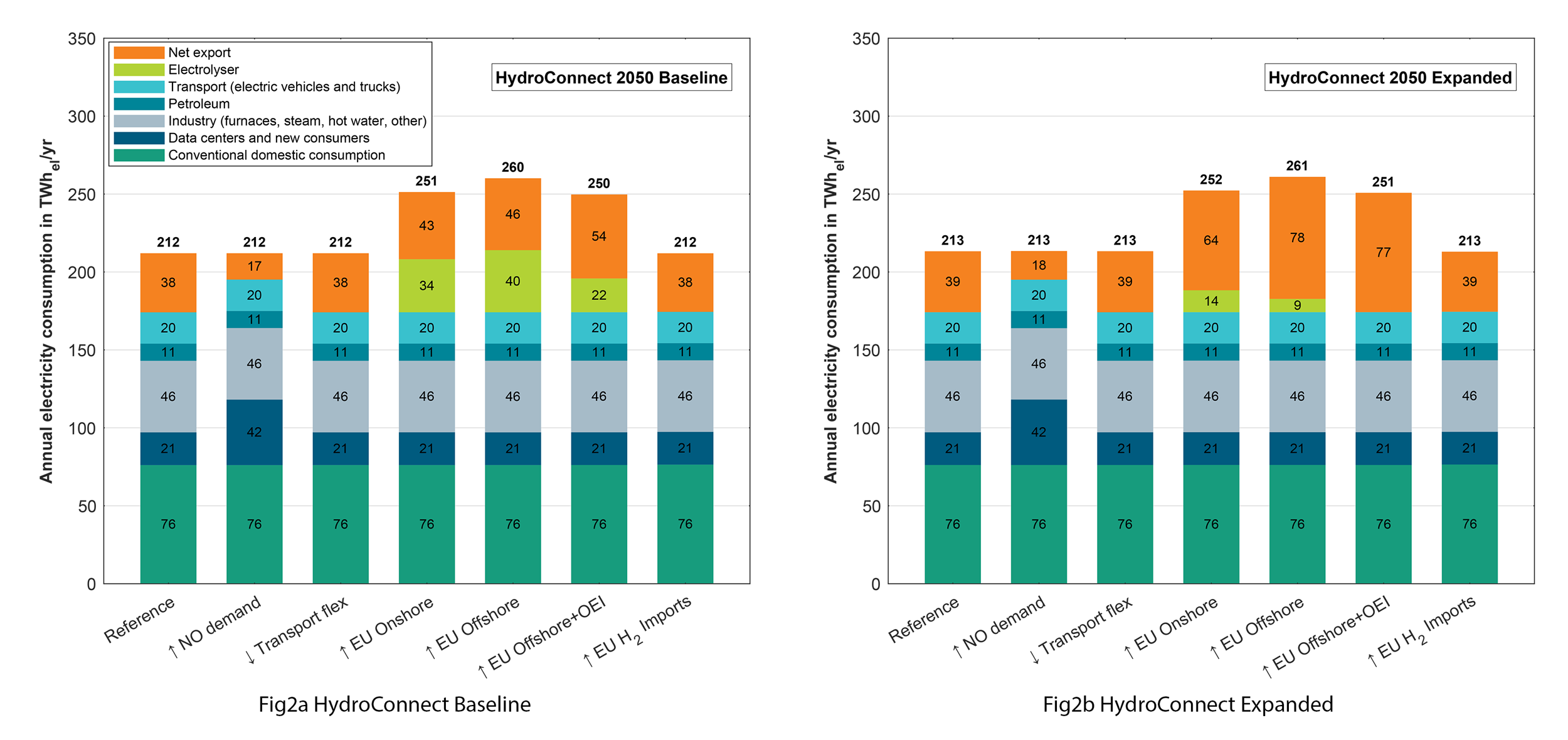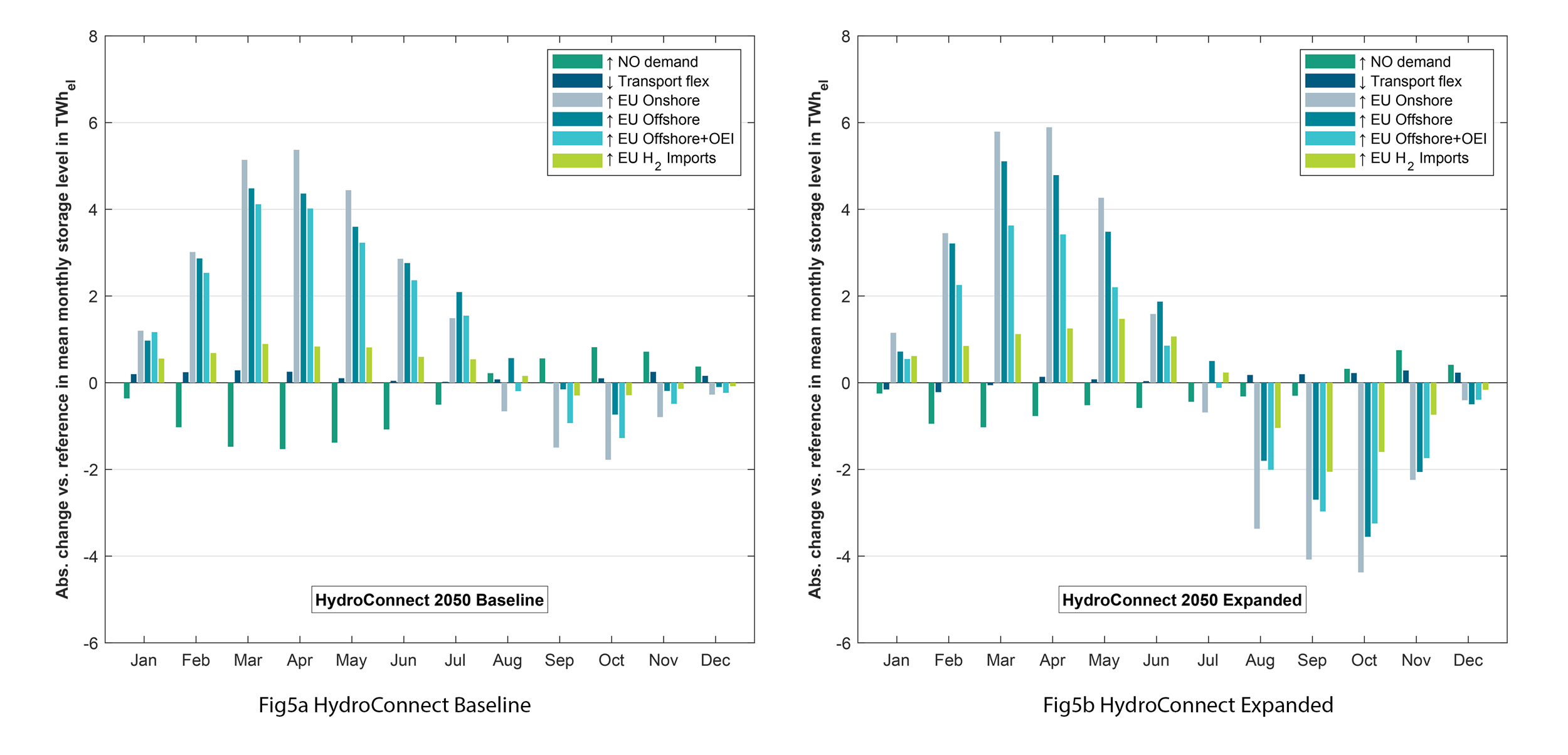Norwegian hydropower in a GHG-neutral Europe: the HydroConnect project
Hydropower is an essential part of the Norwegian energy system. The HydroConnect project is investigating whether and how Norwegian hydropower can contribute to climate protection in Europe. HydroConnect is a collaborative project of the Fraunhofer Institute for Energy Economics and Energy System Technology IEE, the Norwegian research organization SINTEF Energy Research, the Norwegian University of Science and Technology (NTNU) and the University of Trento. HydroConnect is co-funded by the Norwegian Research Council.



A substantial expansion of variable renewable electricity generation is required to achieve the goal of climate neutrality in Europe by 2050. Therefore, European power and energy systems face several cross-border and cross-sectoral challenges, specifically in enabling this transition effectively and efficiently. For this purpose, HydroConnect analyzes the impact of Norwegian hydropower and how it can contribute to balancing variable renewable energy sources.
The role of Norwegian hydropower for climate protection
Norwegian hydropower systems have a large storage capacity in existing water reservoirs. Based on the results of the HydroBalance project and the energy system scenarios from the openENTRANCE project, HydroConnect assesses the impact of Norwegian hydropower systems on providing flexibility to the European power system. A particular focus is on greenhouse gas emissions (GHG) in Europe, electricity prices in Norway and Europe, and environmental impacts on Norwegian reservoirs and rivers. Using various scenarios for the development of the power grid and particularly interconnectors between countries, HydroConnect examines whether Norwegian hydropower can make a significant contribution to climate protection in Europe.
Fraunhofer IEE uses its modelling and optimization tools for both medium- and long-term scenario developments. "We have used our energy system model SCOPE Scenario Development (SCOPE SD) to develop relevant European energy scenarios for Norwegian hydropower. Here, among other things, we use a detailed hydropower model and investigate different scenario variants to analyze the role of hydropower in future European energy scenarios and to consider possible uncertainties of the future," says Dr Philipp Härtel, project leader at Fraunhofer IEE.
The project team has analyzed a total of 15 different scenarios. In a medium-term scenario developed for 2030, GHG emissions are reduced by 55 per cent compared to 1990. In the long-term scenarios for 2050, Europe is modeled as a net-neutral system, implying that fewer GHG emissions are produced than absorbed by the system.
The representation of multi-reservoir hydropower systems across Europe is based on Fraunhofer IEE's internal datebase. It contains information on hydropower plants and reservoir parameters of over 850 hydropower systems in Europe. Besides plant- and reservoir-specific data, the database describes complex hydraulic connections and couplings, as well as information on cross-border market participation. Based on the detailed models at SINTEF, the parameters of hydropower systems in Norway were updated in close collaboration with our research partners.
Results offer various opportunities for further research
One of the next immediate steps in the HydroConnect project is transferring the result data from the SCOPE SD modelling framework at Fraunhofer IEE to the downstream models at SINTEF and NTNU via the openENTRANCE nomenclature. In particular, output data from SCOPE SD will be used to analyze the use of Norwegian hydropower in even greater detail using the FanSI model.
With the established model setup and linkage, it is possible to investigate new sensitivities based on the reference cases. Given the current political debate, additional sensitivities concerning offshore energy islands or future hydrogen and e-fuel import price uncertainties could be interesting avenues for future research.
Last modified: